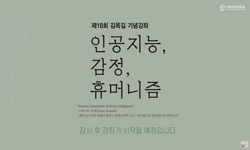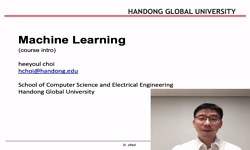Purpose: Varicocele repair is recommended in the presence of a clinical varicocele together with at least one abnormal semen parameter, and male infertility. Unfortunately, up to 50% of men who meet criteria for repair will not see meaningful benefit ...
http://chineseinput.net/에서 pinyin(병음)방식으로 중국어를 변환할 수 있습니다.
변환된 중국어를 복사하여 사용하시면 됩니다.
- 中文 을 입력하시려면 zhongwen을 입력하시고 space를누르시면됩니다.
- 北京 을 입력하시려면 beijing을 입력하시고 space를 누르시면 됩니다.



Artificial Intelligence Based Machine Learning Models Predict Sperm Parameter Upgrading after Varicocele Repair: A Multi-Institutional Analysis
한글로보기https://www.riss.kr/link?id=A108505036
-
저자
Ory Jesse (Department of Urology, University of Miami, Coral Gables, FL, USA.Department of Urology, Dalhousie University, Halifax, NS, Canada.) ; Tradewell Michael B. (Department of Urology, University of Miami, Coral Gables, FL, USA.) ; Blankstein Udi (Division of Urology, Department of Surgery, University of Toronto, Toronto, ON, Canada.) ; Lima Thiago F. (Department of Urology, University of Miami, Coral Gables, FL, USA.) ; Nackeeran Sirpi (Miller School of Medicine, University of Miami, Miami, FL, USA.) ; Gonzalez Daniel C. (Department of Urology, University of Miami, Coral Gables, FL, USA.) ; Nwefo Elie (Miller School of Medicine, University of Miami, Miami, FL, USA.) ; Moryousef Joseph (McGill Medical School, McGill University, Montreal, QC, Canada.) ; Madhusoodanan Vinayak (Department of Urology, University of Miami, Coral Gables, FL, USA.) ; Lau Susan (Division of Urology, Department of Surgery, University of Toronto, Toronto, ON, Canada.) ; Jarvi Keith (Division of Urology, Department of Surgery, University of Toronto, Toronto, ON, Canada.) ; Ramasamy Ranjith (Department of Urology, University of Miami, Coral Gables, FL, USA.)
- 발행기관
- 학술지명
- 권호사항
-
발행연도
2022
-
작성언어
English
- 주제어
-
등재정보
KCI등재,SCOPUS,SCIE
-
자료형태
학술저널
- 발행기관 URL
-
수록면
618-626(9쪽)
- DOI식별코드
- 제공처
-
0
상세조회 -
0
다운로드
부가정보
다국어 초록 (Multilingual Abstract)
Purpose: Varicocele repair is recommended in the presence of a clinical varicocele together with at least one abnormal semen parameter, and male infertility. Unfortunately, up to 50% of men who meet criteria for repair will not see meaningful benefit in outcomes despite successful treatment. We developed an artificial intelligence (AI) model to predict which men with varicocele will benefit from treatment.
Materials and Methods: We identified men with infertility, clinical varicocele, and at least one abnormal semen parameter from two large urology centers in North America (Miami and Toronto) between 2006 and 2020. We collected pre and postoperative clinical and hormonal data following treatment. Clinical upgrading was defined as an increase in sperm concentration that would allow a couple to access previously unavailable reproductive options. The tiers used for upgrading were: 1–5 million/mL (ICSI/IVF), 5–15 million/mL (IUI) and >15 million/mL (natural conception). Thus moving from ICSI/IVF to IUI, or from IUI to natural conception, would be considered an upgrade. AI models were trained and tested using R to predict which patients were likely to upgrade after surgery. The model sorted men into categories that defined how likely they were to upgrade after surgery (likely, equivocal, and unlikely).
Results: Data from 240 men were included from both centers. A total of 45.6% of men experienced an upgrade in sperm concentration following surgery, 48.1% did not change, and 6.3% downgraded. The data from Miami were used to create a random forest model for predicting upgrade in sperm concentration. On external validation using Toronto data, the model accurately predicted upgrade in 87% of men deemed likely to improve, and in 49% and 36% of men who were equivocal and unlikely to improve, respectively. Overall, the personalized prediction for patients in the validation cohort was accurate (AUC 0.72).
Conclusions: A machine learning model performed well in predicting clinically meaningful post-varicocelectomy sperm parameters using pre-operative hormonal, clinical, and semen analysis data. To our knowledge, this is the first prediction model to show the utility of hormonal data, as well as the first to use machine learning models to predict clinically meaningful upgrading. This model will be published online as a clinical calculator that can be used in the preoperative counseling of patients.
1 Cooper TG, "World Health Organization reference values for human semen characteristics" 16 : 231-245, 2010
2 Samplaski MK, "Varicocelectomy to"upgrade"semen quality to allow couples to use less invasive forms of assisted reproductive technology" 108 : 609-612, 2017
3 Pallotti F, "Varicocele and semen quality : a retrospective case-control study of 4230 patients from a single centre" 41 : 185-192, 2018
4 Baazeem A, "Varicocele and male factor infertility treatment : a new meta-analysis and review of the role of varicocele repair" 60 : 796-808, 2011
5 Kirby EW, "Undergoing varicocele repair before assisted reproduction improves pregnancy rate and live birth rate in azoospermic and oligospermic men with a varicocele : a systematic review and meta-analysis" 106 : 1338-1343, 2016
6 Al Bakri A, "Time for improvement in semen parameters after varicocelectomy" 187 : 227-231, 2012
7 Birowo P, "The effects of varicocelectomy on the DNA fragmentation index and other sperm parameters : a meta-analysis" 30 : 15-, 2020
8 Newton R, "The effect of varicocelectomy on sperm count, motility, and conception rate" 34 : 250-254, 1980
9 Guzick DS, "Sperm morphology, motility, and concentration in fertile and infertile men" 345 : 1388-1393, 2001
10 Madhusoodanan V, "Preoperative follicle-stimulating hormone : a factor associated with semen parameter improvement after microscopic subinguinal varicocelectomy" 14 : E27-31, 2020
1 Cooper TG, "World Health Organization reference values for human semen characteristics" 16 : 231-245, 2010
2 Samplaski MK, "Varicocelectomy to"upgrade"semen quality to allow couples to use less invasive forms of assisted reproductive technology" 108 : 609-612, 2017
3 Pallotti F, "Varicocele and semen quality : a retrospective case-control study of 4230 patients from a single centre" 41 : 185-192, 2018
4 Baazeem A, "Varicocele and male factor infertility treatment : a new meta-analysis and review of the role of varicocele repair" 60 : 796-808, 2011
5 Kirby EW, "Undergoing varicocele repair before assisted reproduction improves pregnancy rate and live birth rate in azoospermic and oligospermic men with a varicocele : a systematic review and meta-analysis" 106 : 1338-1343, 2016
6 Al Bakri A, "Time for improvement in semen parameters after varicocelectomy" 187 : 227-231, 2012
7 Birowo P, "The effects of varicocelectomy on the DNA fragmentation index and other sperm parameters : a meta-analysis" 30 : 15-, 2020
8 Newton R, "The effect of varicocelectomy on sperm count, motility, and conception rate" 34 : 250-254, 1980
9 Guzick DS, "Sperm morphology, motility, and concentration in fertile and infertile men" 345 : 1388-1393, 2001
10 Madhusoodanan V, "Preoperative follicle-stimulating hormone : a factor associated with semen parameter improvement after microscopic subinguinal varicocelectomy" 14 : E27-31, 2020
11 Shabana W, "Predictors of improvement in semen parameters after varicocelectomy for male subfertility : a prospective study" 9 : E579-82, 2015
12 Chen SS, "Predictive factors of successful varicocelectomy in infertile patients" 86 : 320-324, 2011
13 Thompson IM, "Operating characteristics of prostate-specific antigen in men with an initial PSA level of 3. 0 ng/ml or lower" 294 : 66-70, 2005
14 Samplaski MK, "Nomograms for predicting changes in semen parameters in infertile men after varicocele repair" 102 : 68-74, 2014
15 Nitta S, "Machine learning methods can more efficiently predict prostate cancer compared with prostate-specific antigen density and prostate-specific antigen velocity" 7 : 114-118, 2019
16 Auger J, "Intra-and inter-individual variability in human sperm concentration, motility and vitality assessment during a workshop involving ten laboratories" 15 : 2360-2368, 2000
17 Wang J, "Inguinal and subinguinal micro-varicocelectomy, the optimal surgical management of varicocele : a meta-analysis" 17 : 74-80, 2015
18 Jang WS, "External validation of the post-varicocele repair semen analysis nomogram to predict total motile sperm count : a multicenter study" 52 : e13809-, 2020
19 Gandaglia G, "External validation of the 2019 Briganti nomogram for the identification of prostate cancer patients who should be considered for an extended pelvic lymph node dissection" 78 : 138-142, 2020
20 Whelan P, "Effects of varicocelectomy on serum testosterone" 5 : 866-876, 2016
21 Tian D, "Effect of varicocelectomy on serum FSH and LH levels for patients with varicocele : a systematic review and meta-analysis" 80 : 233-238, 2018
22 Kaneko T, "Effect of microsurgical repair of the varicocele on testicular function in adolescence and adulthood" 14 : 1080-1083, 2007
23 Schlegel PN, "Diagnosis and treatment of infertility in men : AUA/ASRM guideline part II" 205 : 44-51, 2021
24 Schlegel PN, "Diagnosis and treatment of infertility in men : AUA/ASRM guideline part I" 205 : 36-43, 2021
25 Dickey RP, "Comparison of the sperm quality necessary for successful intrauterine insemination with World Health Organization threshold values for normal sperm" 71 : 684-689, 1999
26 Cayan S, "Can varicocelectomy significantly change the way couples use assisted reproductive technologies?" 167 : 1749-1752, 2002
27 Kutikov A, "Anatomic features of enhancing renal masses predict malignant and high-grade pathology : a preoperative nomogram using the RENAL Nephrometry score" 60 : 241-248, 2011
28 Goldenberg SL, "A new era : artificial intelligence and machine learning in prostate cancer" 16 : 391-403, 2019
동일학술지(권/호) 다른 논문
-
- 대한남성과학회
- Tradewell Michael B.
- 2022
- KCI등재,SCOPUS,SCIE
-
- 대한남성과학회
- Kang Jiaqi
- 2022
- KCI등재,SCOPUS,SCIE
-
- 대한남성과학회
- Kim Kang Sup
- 2022
- KCI등재,SCOPUS,SCIE
-
- 대한남성과학회
- Kang Byeongjin
- 2022
- KCI등재,SCOPUS,SCIE




 KCI
KCI







